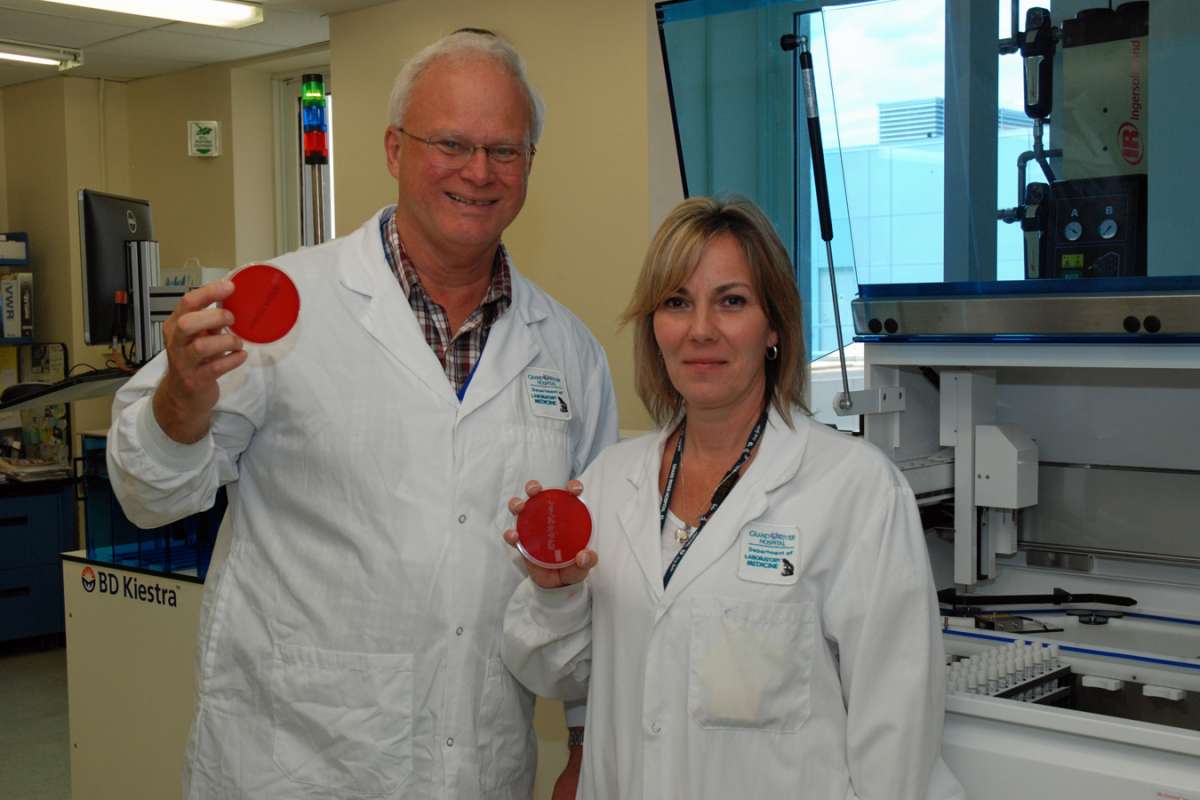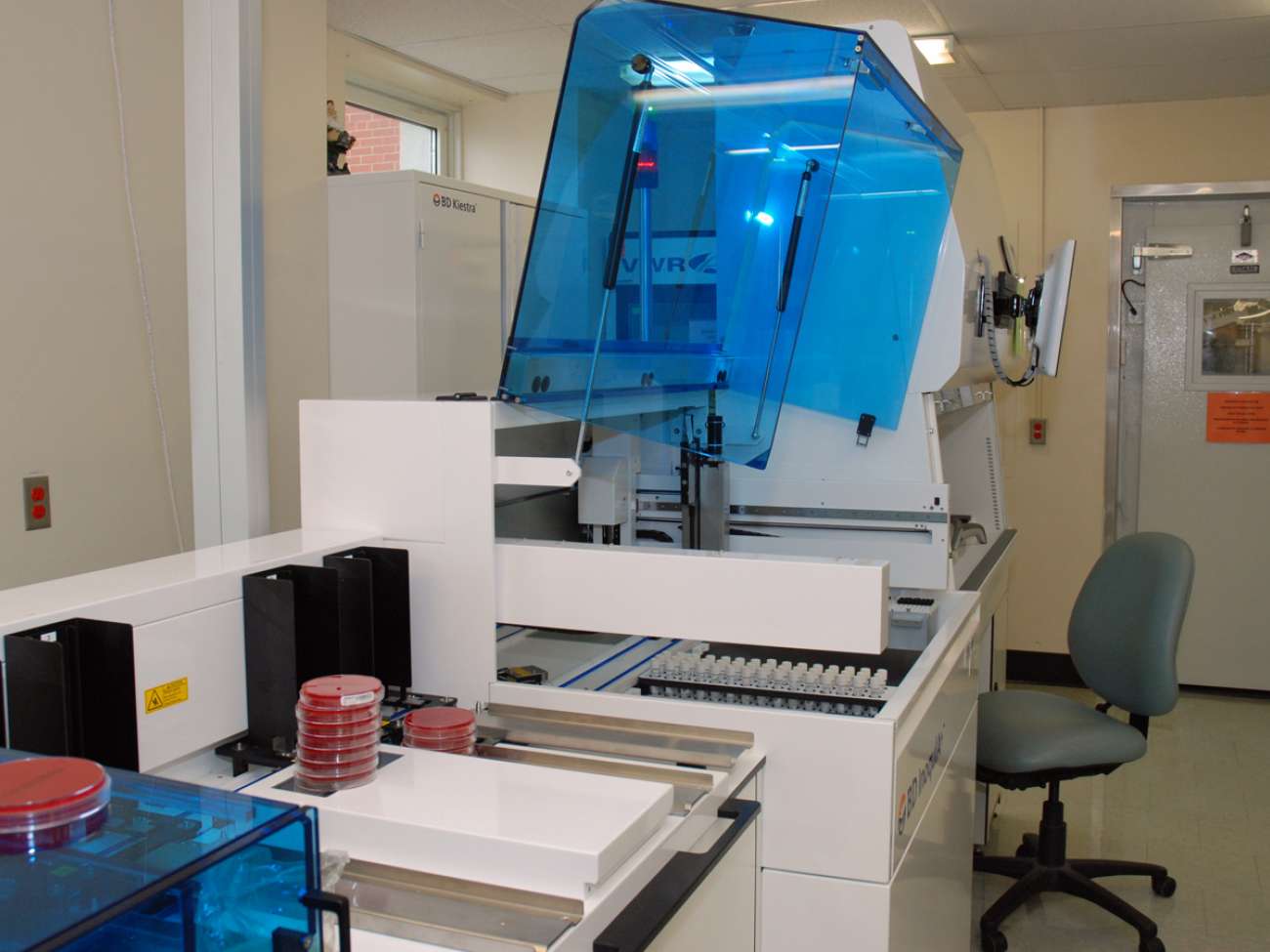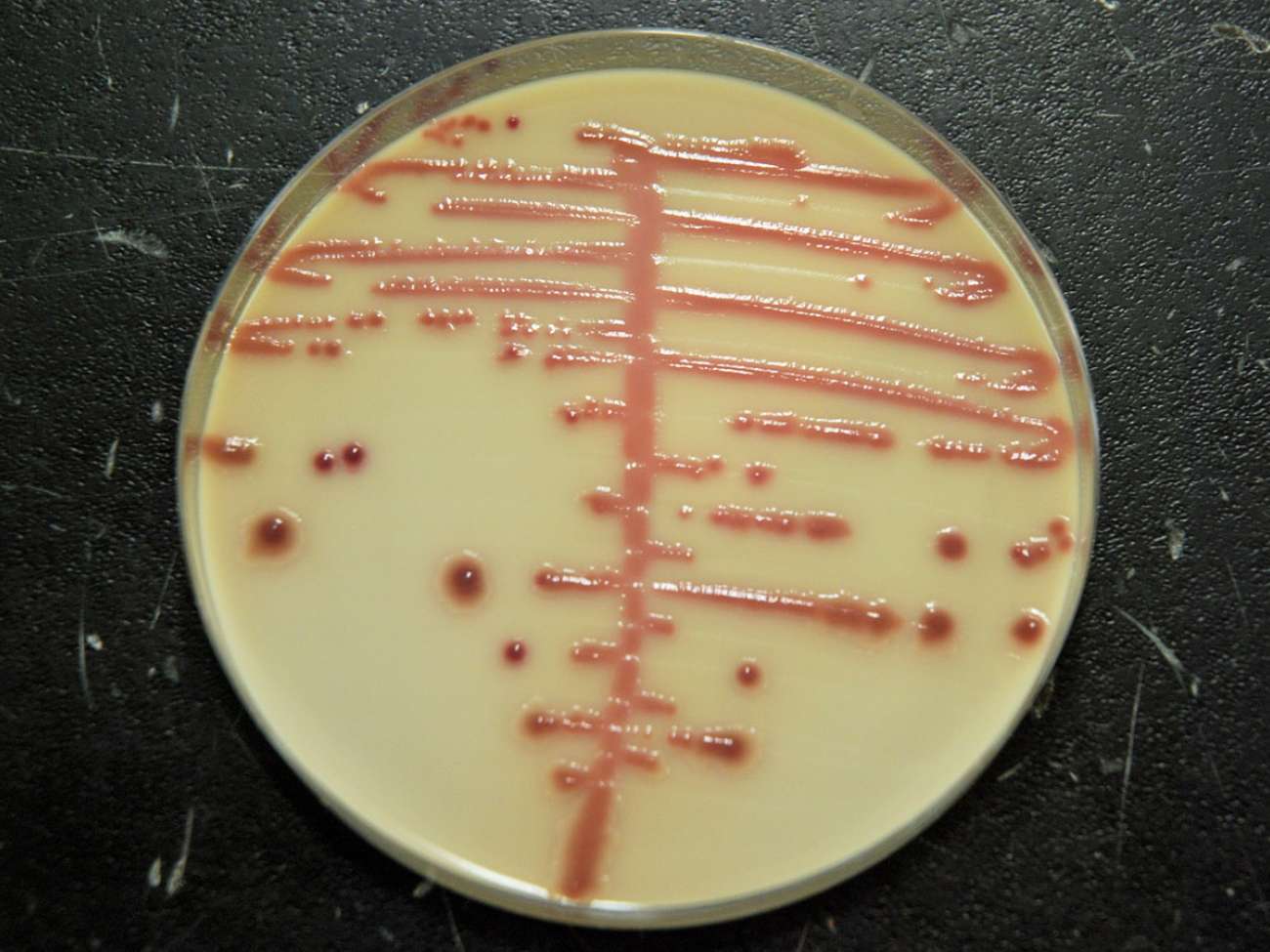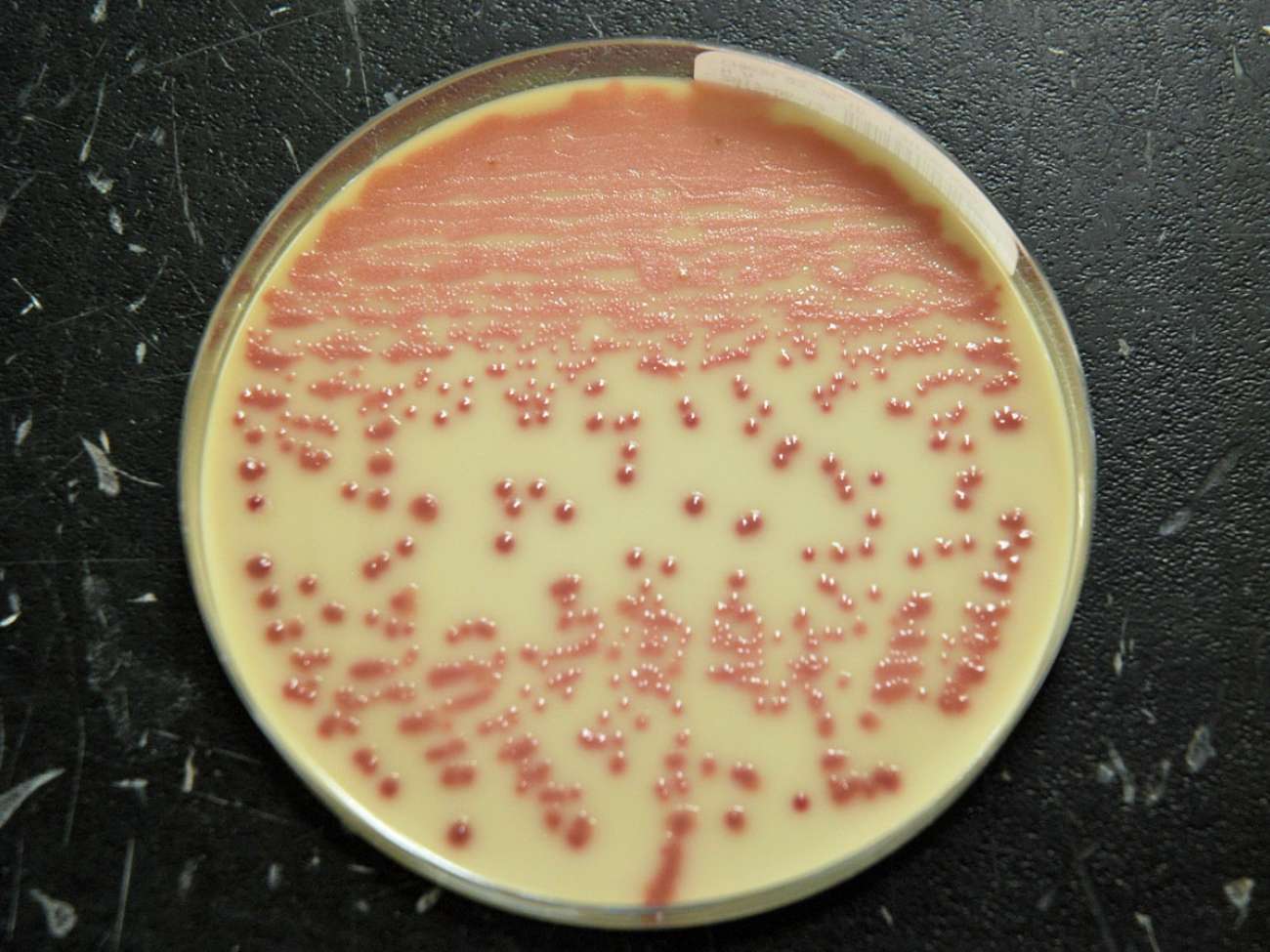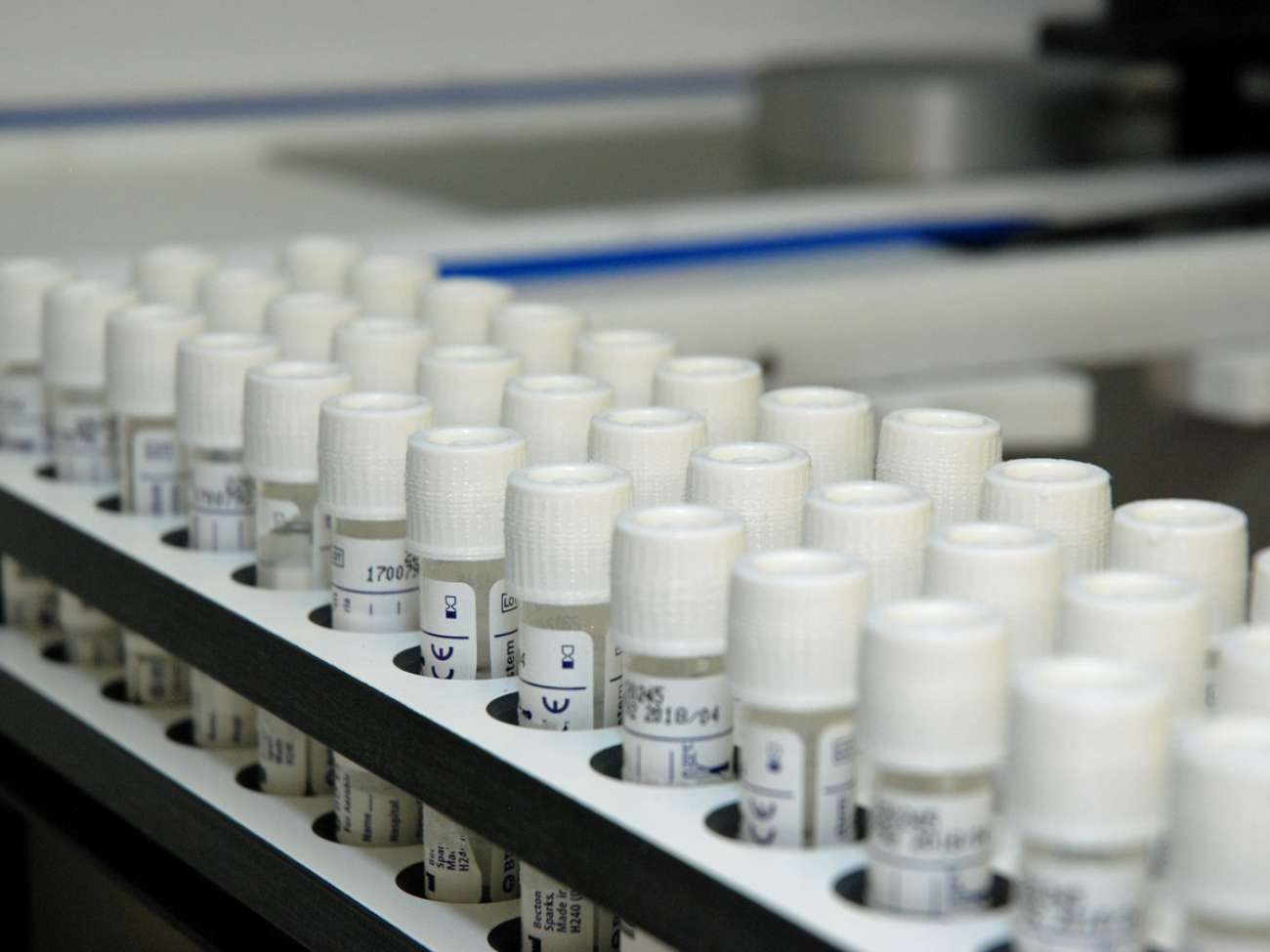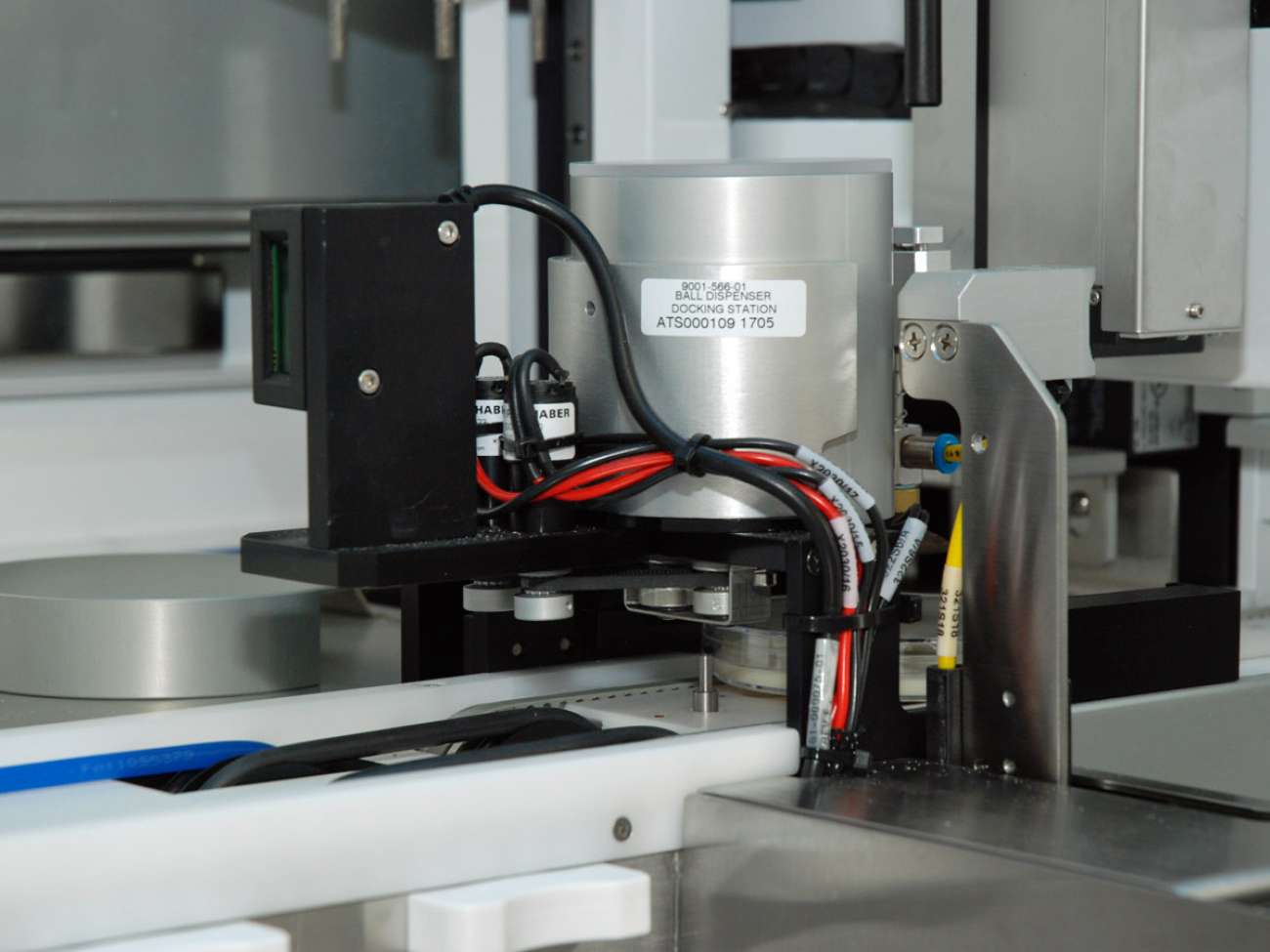If you’re doing 100,000 of the same test process every year, you’ll probably find every way at your disposal to make the preparation as efficient as possible.
That’s why WRHN’s integrated department of pathology and laboratory medicine is using a new automated plate streaker called the Kiestra InoqulA in its microbiology lab. In additional to providing faster results to improve care, it also helps meet consistent standards when preparing specimens for analysis.
The hospital collects fluid samples like urine for patients for testing. These lab tests help to determine what kind of infection a patient may be fighting so the most appropriate treatment can take place.
Until recently, microbiology lab techs would open the sample bottles, dip a swab into the fluid and streak that swab back and forth over a petri dish. The dish would then go into an incubator to grow and identify the pathogen(s) involved.
“While lab staff members work very hard, the swabbing process had its complications,” said Paula Young, senior medical laboratory technologist in microbiology. “It was a very time-consuming and manual process. The work was very repetitive. Streaking could be different from person to person. And even the same person might streak differently from dish to dish.”
WRHN’s automated plate streaker is like a miniature assembly line. Sample bottles are placed into the streaker. The instrument automatically opens the bottles, dips a probe into the urine and streaks the petri dishes exactly the same way.
As the instrument can work with greater precision, it streaks more of the petri dish than a person can by hand. More streaking helps technologists find a higher number of isolated colonies of bacteria to work with on each petri dish. Technologists then have an easier time determining what pathogen a patient is fighting
“Manual methods may require another subculture of bacteria to get the amount and isolation required for same day identification. This in turn may delay how soon the patient is placed on the correct antibiotic which is imperative for recovery,” added Paula.
WRHN intends to expand automated streaking to include routine surveillance tests conducted when a patient arrives in the hospital. That testing allows the hospital identify pathogens that could be transmitted to others, and take proper isolation and infection control precautions.
